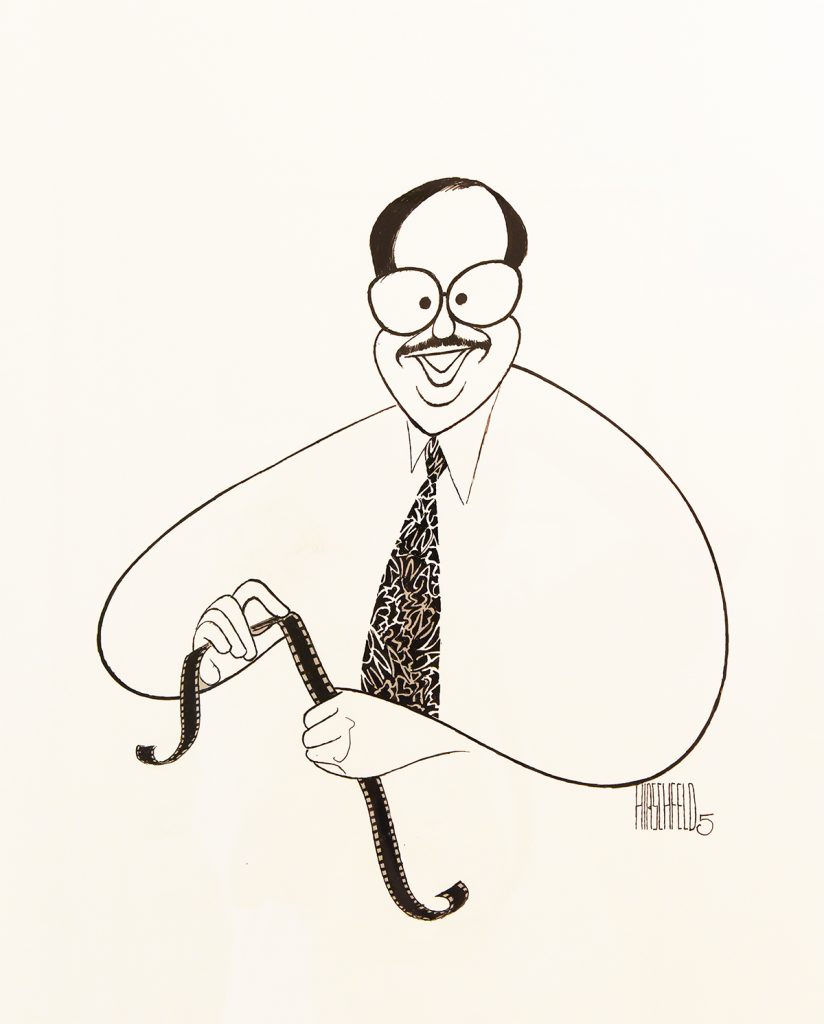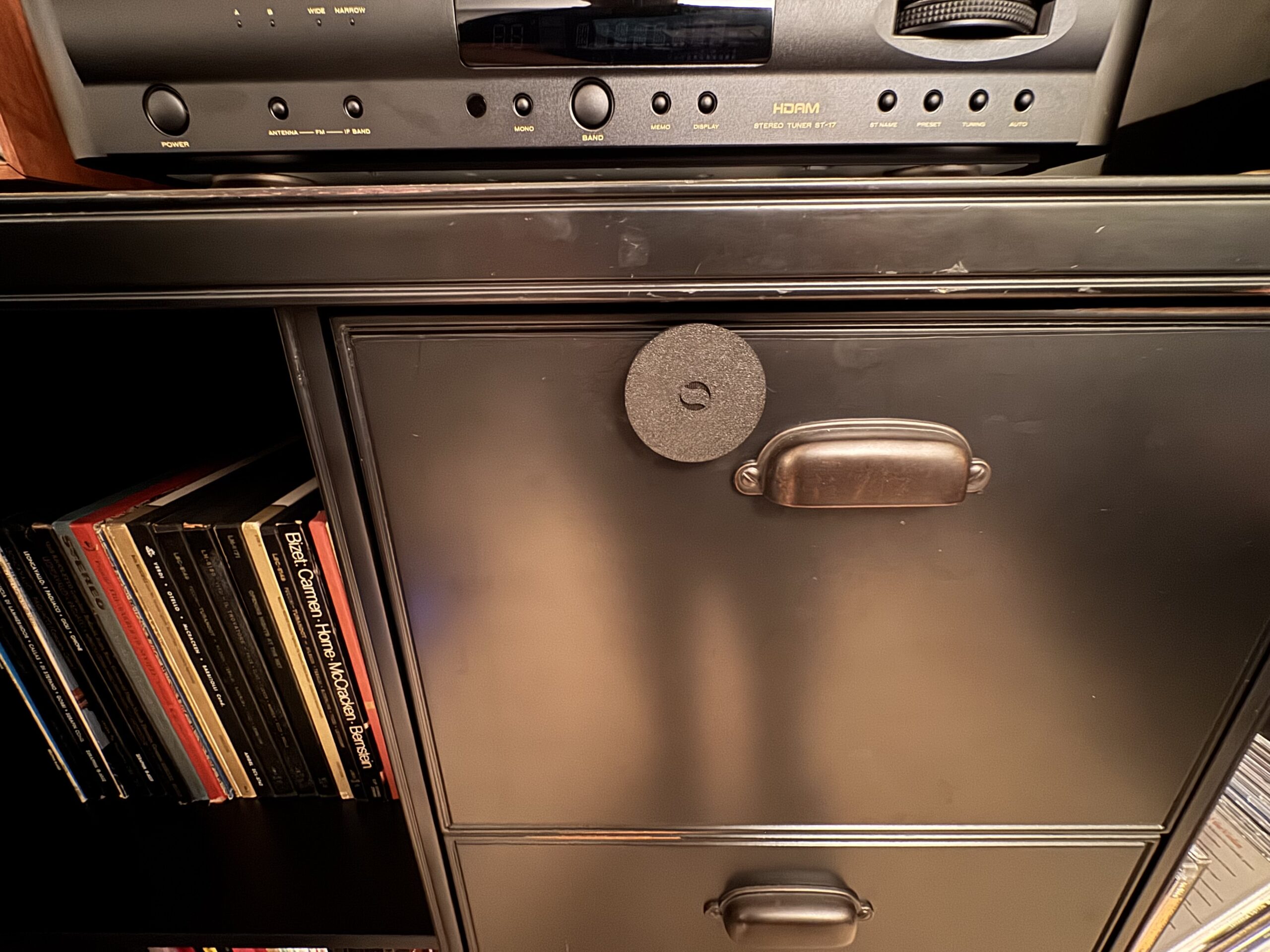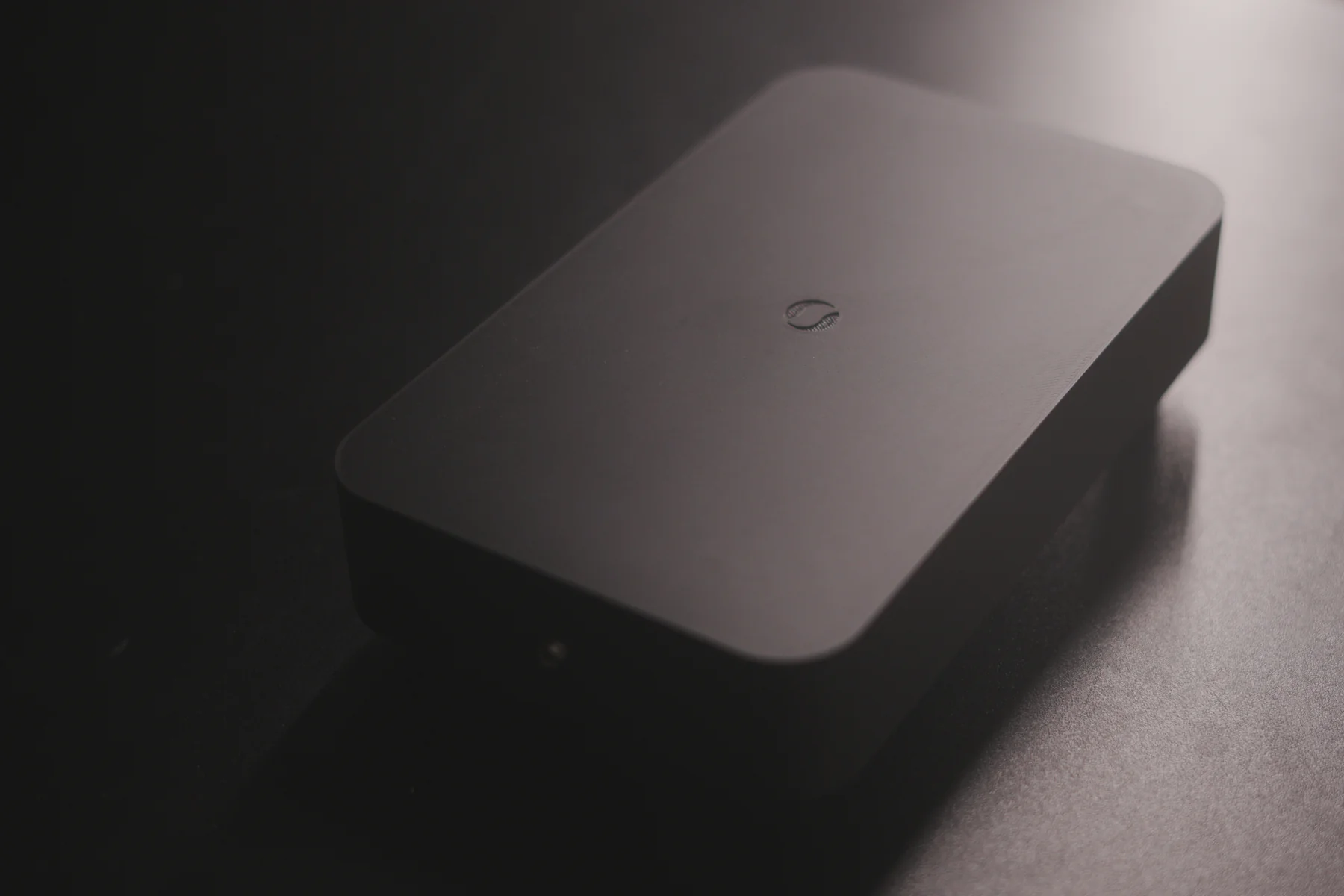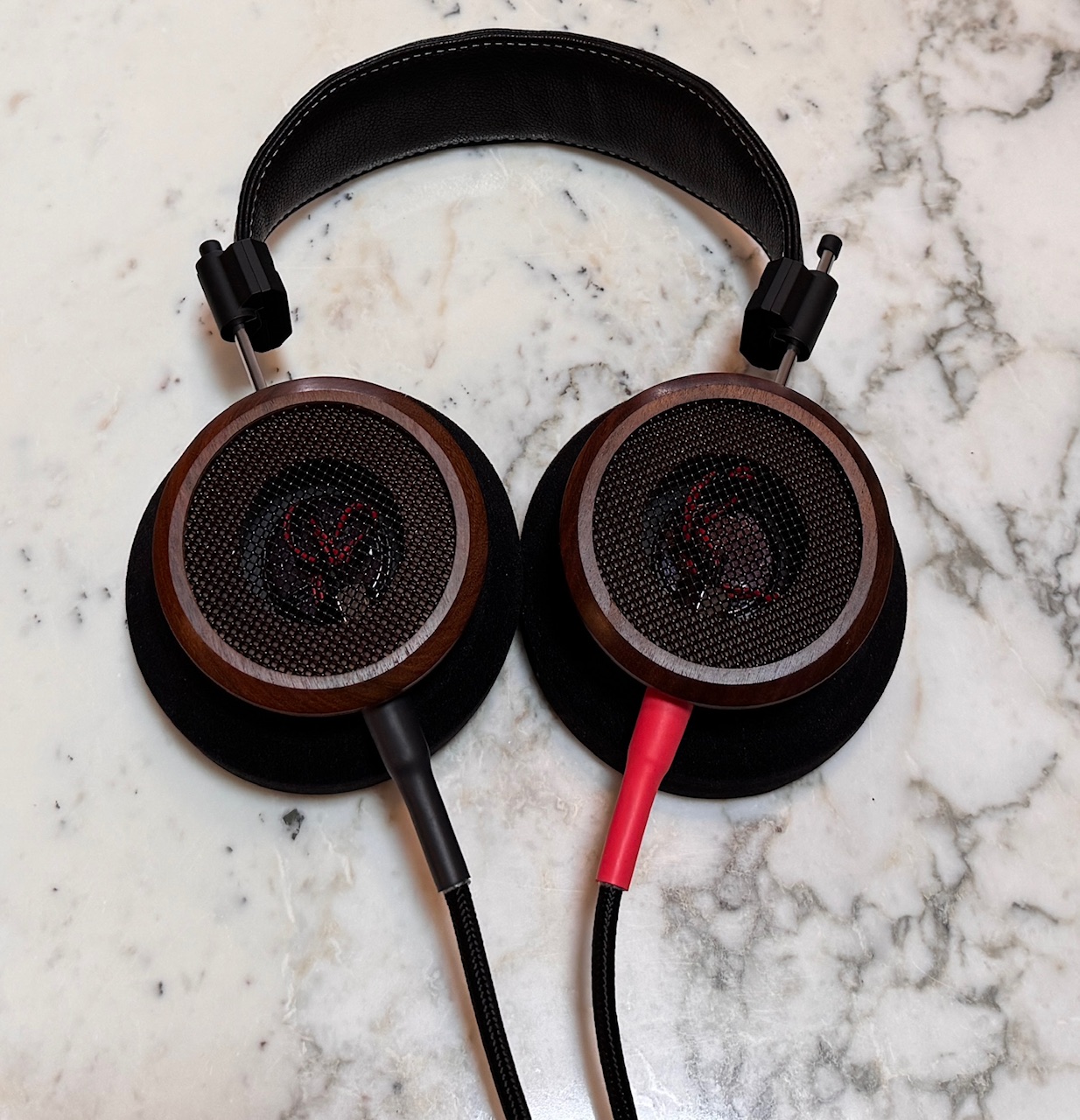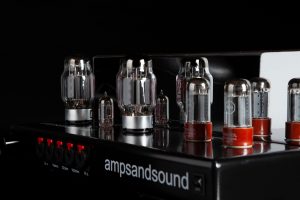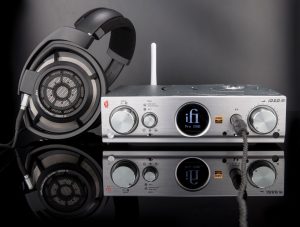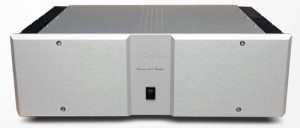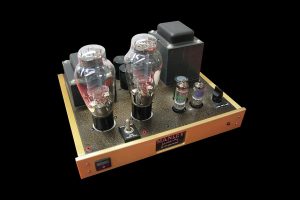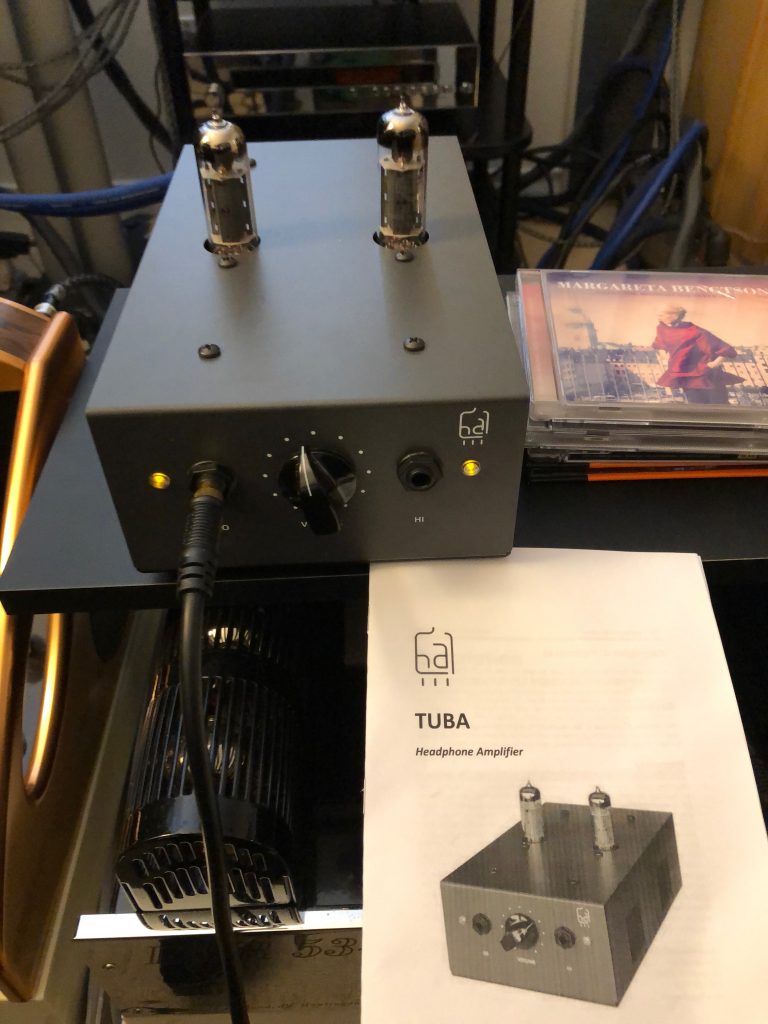
The Hagerman Audio Labs Tuba Headphone Amp (image by Bob Levi)
About 12 years ago I reviewed the Hagerman Trumpet, a very fine all-tube phono stage, built in Hawaii. It was impressive and musical and priced around $2000. It outperformed my Pass X Phono, a $4000 piece, and I almost bought it. When I was alerted to the Tuba from Hagerman, I moved quickly to review it. All tube and solidly built for $649, you can understand my enthusiasm.
Specifications and more from Hagerman
The TUBA is a world-class vacuum tube headphone amplifier designed to operate with either low impedance (Grado) or high impedance (Sennheiser) headphones. The power stage is a single-ended, zero-feedback, parafeed EL84 triode into an impedance matching transformer, offering very low distortion and huge signal headroom. An internal switching power supply creates a stable high voltage for tubes after a 30 second warm up delay. The amplifier is conveniently turned on and off by pressing the volume knob inwards. Sonics are warm, organic, punchy, and extremely non-fatiguing. Fantastic with in-ear monitors (IEMs).
Specifications
- 10k/50k ohm input impedance
- 16/32 ohm output impedance (LO/HI)
- 10Hz to 150kHz bandwidth (-3dB)
- 400mW output power @ 32 ohms
- 7Vrms output voltage
- 2/5dB gain
- 25% distortion @ 0dBV 400Hz
- 6 x 10 x 3.5 inches
- 15Vdc @ 1.35A
- EL84 x 2
- Includes power supply & tubes
- Free shipping
The Tuba has one pair of small pentodes run in triode mode, using half the internal elements per channel. The EL84 is a rugged tube, with long life and a sweetie of a sound. It is considered by many the best and most musical pentode ever built. Transformers couple the tube to both the inputs and outputs, yielding a very powerful and simple circuit. It is also extremely quiet, making IEM use a perfect application. I ran the Tuba for 200 hours to gain maximum transformer sound quality. Tubes need only about 25 hours of run-in. Large transformers need much more.
With separate outputs for low impedance and high impedance cans, you can maximize your Grado and Sennheiser headphones perfectly. This is a feature rarely found on headphone amplifiers in this price range. The Tuba is very powerful. It ran my least efficient cans with no trouble, all the way to blasting volume.
Performance
I utilized 14 pairs of headphones with the Tuba, and not one misbehaved. The efficient Grados were smooth and powerful, with nicely fleshed mids and bass. Though not as detailed as my five to ten times more expensive references, the Tuba filled in textures and presented musical colors quite well on every model of the Grados I tried. I particularly enjoyed the RS1e with the Tuba, as well as the cocobolo wood GS3000. The Tuba powers up the bass like gangbusters.
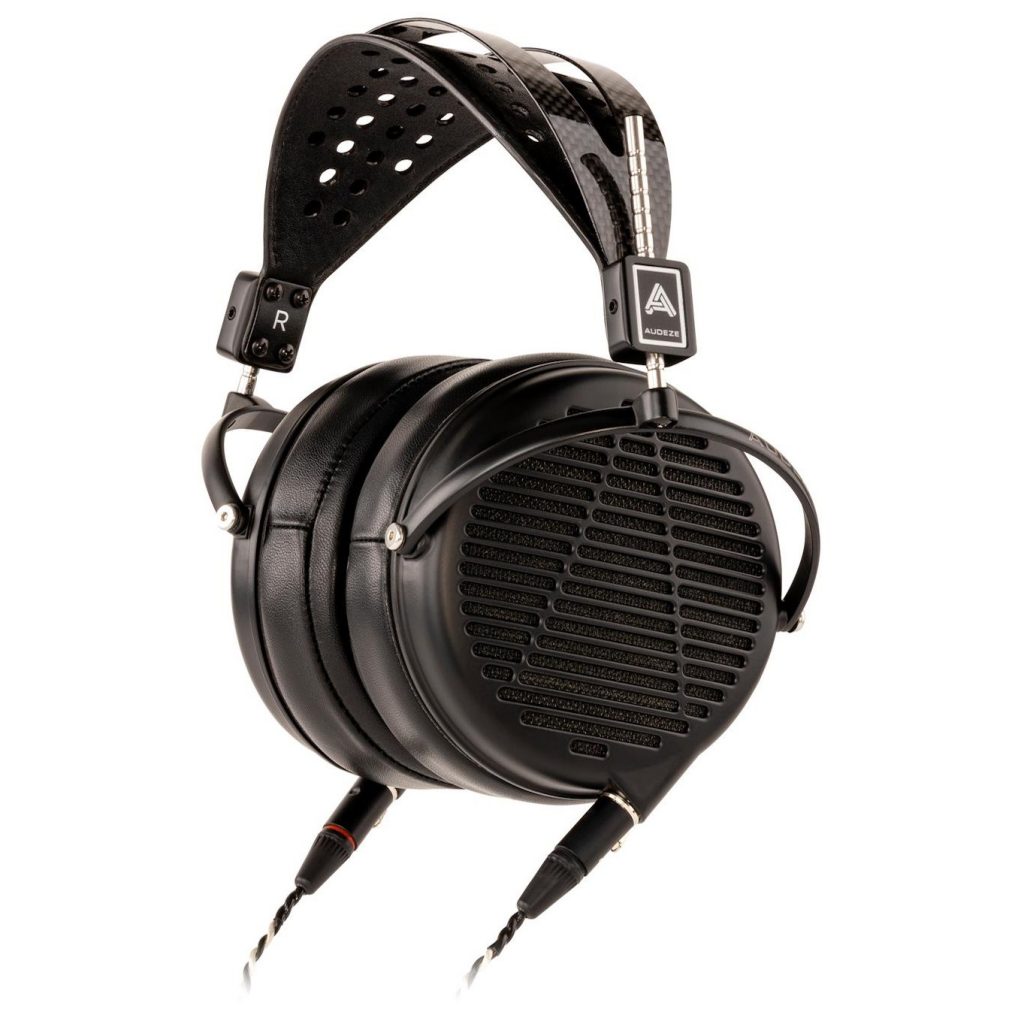
The Audeze LCD24 Headphones (image courtesy of Audeze)
My Audeze LCD-X and LCD24 headphones, which were way too revealing for an amp like this—so I thought—were absolutely lovely. Though not as defined as they are on the King 2, they took on a relaxed, less vivid demeanor, with solid performance that one may easily enjoy. The Tuba is way better than its price tag would indicate, built by a master designer, and tweaked to over-perform. The entire musical range gave the Audeze cans much to admire and little to miss. Images were less rounded and more two dimensional, though not by a lot. Bass response was quite good and deep, and distortion was pretty much zero at all volume levels.
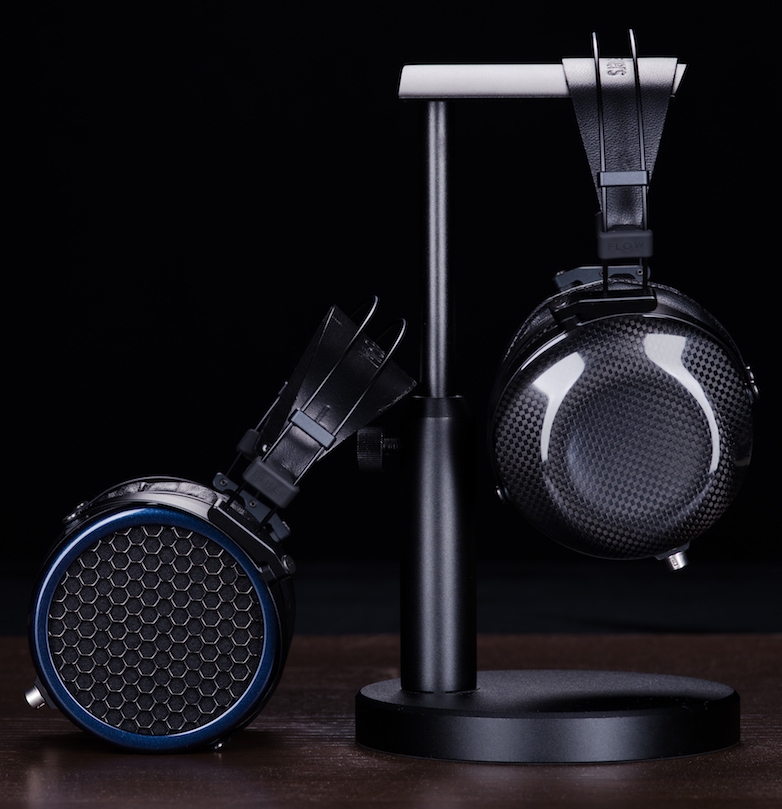
The MrSpeakers Ether Flow and Ether C Flow Headphones (image courtesy of MrSpeakers)
The MrSpeakers Ether Flow was richly textured and dynamic with the Tuba. I heard a sparkle with the Ether I have not heard before. The Tuba offered these lesser efficient planar cans lots of energy and drive, which enhanced their performance. This was a terrific combination and an unexpected one.
Quibbles
It is hard to criticize a product that so over-achieves its price point. Just a few notes, though. The treble range was a bit more emphasized than my amplifier references. In some cases that brought out definition. In others, it was less attractive. A friend who has a Tuba replaced the Mullard reissues with another NOS brand, and reported improved performance, particularly in the high band. I had no other EL84 brands to try, but I am not surprised that judicious tube rolling made the Tuba even better. A manufacturer cannot include NOS tubes and provide a consistent product.
Addendum: The Joy of Tube Rolling!
The Tuba acquitted itself quite well with the supplied tubes compared to my in-house reference headphone amps costing much more. I did not tube roll for this review as I had no alternative EL84 tubes in stock.
Jim Hagerman kindly sent me a pair of NOS RCA 7189 Black Plate, a high powered version of the standard U.S.A. 6BQ5 to try. The 6BQ5 and the EU EL84 are designed to handle 300 volts compared to the 7189 at 400 volts. The Tuba is supplied with the well-made new Mullard EL84 from Sovtek.
I also got a pair of EL84 NOS Tungstram tubes and a pair of EI EL84 tubes both from Kevin Deal at Upscale Audio in LaVern, CA. Tube comparisons revealed fascinating changes in the Tuba's performance.
Here is what I heard on my dynamic Grado RS1e and planar Audeze LCD24 Headphones.
New stock Mullard: Highly detailed, very good textures, very good imaging, low noise, slightly rolled highs, a touch of etch, very satisfactory performance overall.
NOS RCA: Attack, attack, attack, increased definition and drive, smooth, even performance from top to bottom frequencies, rather relentless, better with Audeze cans, exciting, may cause long term listening fatigue, typical RCA very dynamic clean sound, low noise, best tubes for use with inefficient hard to drive headphones.
NOS Tungstram: Even performance at all frequencies, slight etch, powerful and clear, less aggressive than the RCA though still highly dynamic, high definition, fuller textures than Mullard or RCA, not as smooth as the Mullard, excellent bass, quiet, slightly fatiguing, almost perfect overall in the Tuba.
NOS EI EL84: Very highly detailed, excellent textures, Tuba performance now almost indistinguishable from the Linear Audio XOTL by Berning at $2200, dynamics just right, zero fatigue, quiet, smooth and elegant, a bit warm and sweet, beautiful highs, moderate dynamics and drive, natural and neutral, superior definition overall, not fatiguing, awesome value.
As you can see, the EI EL84, no longer in production, is the perfect choice for the Tuba among the tubes tested. It is available at Upscale Audio for only $30 each in matched pairs and burned in for 48 hours before grading. The superiority of this tube is not subtle though other brands may offer performance parameters that may appeal to you. The EI Tube is very special and is generally considered a superior copy of the NOS Mullard EL84, a very expensive tube right now. The unique fun of tube gear is one may tailor and possibly improve the sound by rolling tube brands!
Summary
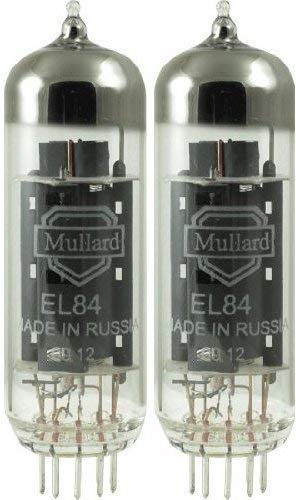
EL 84 triode tubes (not necessarily the same tubes as shipped with the Tuba; image courtesy of Amazon.com)
The Hagerman Audio Labs Tuba Headphone Amplifier, with all-tube/transformer amplification, over-performs brilliantly at its low price point, and is more flexible than some other headphone amps, too. I could not find headphones that were too efficient or inefficient for this mighty headphone amp, which was also very quiet as well. The fine build quality and glitch-free operation were unusual at this price.
The overall performance was consistently excellent with strong colorful imaging and distortion-free power. The Tuba is worry-free (10-year warranty) and totally unchallenged in this price range.
My compliments to Hagerman Audio Labs for developing the all-tube Tuba Headphone Amplifier that is so amazingly affordable and musical for those shopping for a less expensive audiophile high-performance product.
Tuba Headphone Amplifier
Retail: $649
Hagerman Audio Labs, Jim Hagerman
PO Box 61911
Honolulu, HI 96839
USA
